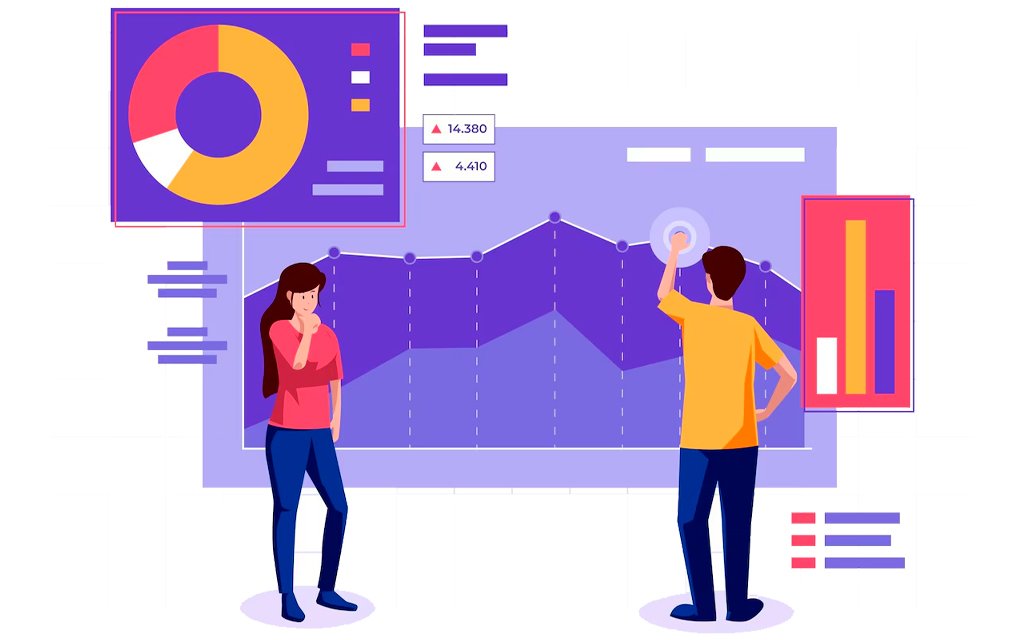Data visualization is a graphical way of representation of data to provide a clear and accessible medium for understanding and interpretation of complex information. It involves the creation of visual elements such as charts, graphs, maps, and dashboards to convey patterns, trends, and insights within datasets through various data visualization techniques to streamline comprehension and decision-making mechanisms.
It serves as a powerful aid for students to navigate across various DSAT fields, including reading, writing, and math, fostering a deeper understanding of data patterns and informed decision-making.
Understanding Data Visualization in DSAT:
In today’s evolutionary landscape, which is becoming more and more data-driven, the ability to extract meaningful insights from vast datasets through data visualization techniques is paramount for reliable decision-making.
The Digital SAT (Scholastic Assessment Test) is a standardized test widely used for college admissions conducted by the College Board. It serves as an important benchmark for assessing students’ proficiency in data science, including the pivotal skill of data visualization.
Data visualization is the process of representing data graphically to uncover patterns, trends, and correlations that may be hidden in raw datasets. Effective visualization is crucial in conveying information in a digestible format, enabling decision-makers to draw insights quickly and accurately. In the context of the DSAT, a solid grasp of data visualization techniques is essential to showcase your analytical capabilities.
Advantages of Data Visualization in DSAT:

While the DSAT primarily focuses on assessing skills in reading, writing, and mathematics, data visualization techniques can play a corroborative role in various aspects of the test preparation and analysis process.
Here are a few areas in which data visualization techniques can be useful in the context of the Digital SAT:
Progress Analysis:
One of the most common data visualization techniques is interactive dashboards and charts. Tracking progress through these interactive dashboards and charts helps students analyze their improvement trajectory. Visualization can provide a motivating visual representation of the journey from initial practice tests to the desired target scores.
Performance Tracking:
Data visualization techniques can help students track their performance over time. The visual representations of extensive section-wise practice test scores can help students identify areas of strength and weakness, enabling them to tailor their study plans more effectively.
Content Focus:
Visualizing the frequency of question types and content areas guides students in focusing their preparation on topics that are more likely to appear on the SAT. This strategic approach ensures efficient use of study time.
Time Management:
Data visualization techniques can help analyze the distribution of time spent on different question types or sections for crafting effective time management plans. Students can identify which sections are more time-consuming and adjust their speed and accuracy during the actual test accordingly.
Strategic Planning:
Visualized data of the historical SAT scores for different colleges can assist students in making strategic college selections. They can identify score ranges for their preferred institutions and set realistic and achievable goals based on the historical admission dataset.
Goal Setting:
Visual representations of score goals and progress towards those goals can be a motivating factor for students. This helps in targetted goal-setting, breaking down larger goals into manageable milestones.
Resource Allocation:
The effectiveness of study resources, such as practice materials and online courses through data visualization techniques, helps students allocate their time and efforts efficiently, ensuring a balanced and more comprehensive preparation approach.
Test Environment Simulation:
Simulation of the DSAT test environment and visualizing performance metrics against goals during practice help students acclimate to the digital format. Getting familiarized with the test can reduce anxiety and improve overall performance on D-day.
Data Visualization Techniques for DSAT:

Let us delve into the art of mastering DSAT data visualization techniques and exploring strategies to enhance your ability to enhance your preparation by breaking down complex information through compelling visuals.
Choosing the Right Visualization Tools:
The Selection of appropriate tools for the task at hand is the first step in mastering DSAT data visualization. Popular tools include Python libraries and R language packages aid in understanding the strengths and weaknesses of these tools. This helps you choose the best one for visualizing specific types of data, ensuring clarity and accuracy in your presentation.
Mastering Chart Types:
Different datasets require different data visualization techniques, such as types of charts, for effective visual communication. Whether it’s bar charts, line charts, scatter plots, or heat maps, mastering a variety of chart types is crucial. Each chart conveys information uniquely, and selecting the right one enhances your understanding of the underlying data. Through examples and hands-on practice, you can refine your skills in creating impactful visualizations of subject matter, such as case studies and data analyses.
Data Storytelling:
Data visualization is not just about creating visually appealing charts; it’s about telling a compelling story with your data. You can guide your preparation through the insights and conclusions you’ve drawn by weaving a narrative around your visualizations. This storytelling aspect is often a key component in the DSAT, where examiners look for the ability to connect the dots and present a coherent analysis.
Emphasizing Clarity and Simplicity:
Less is more. This stands true in the realm of data visualization. Strive for clarity and simplicity in your visuals, avoiding unnecessary clutter that can distract from the main message. Ensure that labels, legends, and annotations are clear and concise, allowing the interpretation of the information effortlessly. This emphasis on simplicity aligns with the DSAT’s objective of assessing practical data analytical skills in case studies.
Practical Application Exercises:
To master DSAT preparation, the practical application of data visualization techniques is paramount. Incorporating real-world datasets into your practice sessions and challenging yourself to visualize information that mirrors scenarios encountered in the professional sphere not only enhances your technical skills but also familiarizes you with the nuances of working with diverse datasets.
Utilizing Color and Design Principles:
Effective use of color and design principles can elevate mundane data presentation to impactful visualizations. Understanding the psychology of colors and leveraging them to emphasize key points or highlight trends can help in long-term and pictographic memory stimulation. Additionally, principles such as balance, proportion, and consistency in your preparation and test can be fuelled by these techniques.
Conclusion:
DSAT Data Visualization techniques play a vital role in your DSAT journey, combining technical proficiency with creativity and effective communication prowess. To help you with DSAT preparation, Litera Centre offers affordable quality DSAT online coaching for DSAT aspirants with live coaching, expert faculty, one-to-one mentorship, periodic assessments, online practice questions, mock tests, and study materials prepared with data visualization applications and dedicated support to make you DSAT ready.
References:
- https://online.hbs.edu/blog/post/data-visualization-techniques
- https://satsuite.collegeboard.org/media/pdf/official-sat-study-guide-problem-solving-data-analysis.pdf
- https://community.ibm.com/community/user/ai-datascience/blogs/jorge-castanon/2019/04/16/decoding-college-admissions-using-data-visualization/





